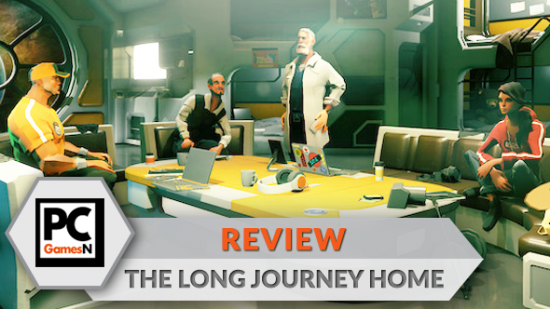I’m lost in space: totally stranded, low on resources, and on the lam from a gelatinous loan shark. Two of my four crew members are critically injured, meaning there are no spare hands to man my ship’s weapons. Worse still, I’ve just used my last tank of Exotic Matter, the resource that powers the Daedalus-7’s interstellar jumps, which means I have two options: scoop up enough EM for another jump by orbiting a star, or mine it from one of the many planets within range. The former will likely kill one of my weak crew members through radiation damage and all but obliterate my ship’s hull. The latter will require me to meticulously probe each planet to find the one or two with the right resource and safe enough landing conditions. I opt for the orbital scoop, but as I plunge into the star’s gravitational pull I’m intercepted by a Raxact raider who offers me a different choice: blood or coin? I don’t have the coin, and my ship is in a critical state of disrepair, so I flee in exchange for taking a few hits. I flee straight into the sun though, filling my view with injury updates and death notifications as the screen fades to black and sombre music swells.
Related: the best indie games on PC.
Thus concludes my ninth failed playthrough of The Long Journey Home. I want to scream, but instead I start up a new game in stoic silence, hopeful that I can trump the growing sense of frustration by yet again attempting to bring the Daedalus-7 safely back to Earth. The Long Journey Home is not a kind game. From your first cataclysmic jump that takes you 37,847 parsecs away from the safety of Earth, to the last jump that places you within touching distance of the finish line, you can always rely on the fact that things are only going to get worse.
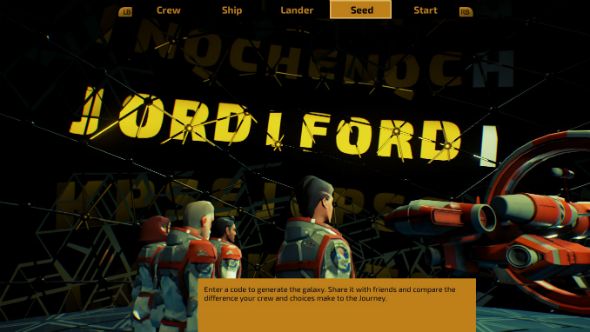
You only have one objective in The Long Journey Home – it’s right there in the game’s title. In the not-too-distant future, the NASA-like IASA have invented interstellar travel and hope to put it to good use by sending you out into the universe in search of new planets for the human race to colonise. You select a crew of four from a pool of ten characters, each with a distinct personality and a special item, the purpose of which isn’t always clear. You also get to choose a ship and lander – there’s a strong one, a nimble one, and an all-rounder to pick from for both. Then it’s just a case of choosing a world seed and blasting off. However, something goes wrong, and instead of hopping one solar system over you’re catapulted to the arse end of the universe with the near-impossible goal of bringing your crew home, alive and well.
Staying alive is all about being sensible, successfully interpreting the world, and managing your resources effectively. There are three resources you’ll need to keep a healthy stock of: metals, gasses, and Exotic Matter. Metals are used to repair the hull of your ship and lander, gasses are basic fuel, and Exotic Matter lets you jump between star systems. On top of that you’ll also have to accumulate Credits to buy upgrades and pay for intergalactic travel via alien-owned mass relays. Of course, none of that matters if your crew succumb to an infection, or die on a risky lander mission. Simply put, there are a lot of things to take care of on your space odyssey.
In that respect, The Long Journey Home is reminiscent of FTL. Except it’s not, because it’s also got strands of Star Control II, Lunar Lander, Space Rangers 2, and No Man’s Sky in its DNA. The Long Journey Home is a hard game to pin down to any single genre or influence because it’s comprised of multiple minigames.
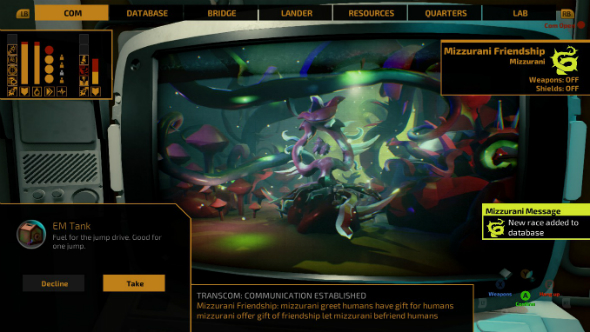
At an interplanetary level you’re steering and powering your ship around a 2D star system, economising your fuel consumption by slingshotting around planets and riding gravitational pulls. Resources are harvested by venturing down onto planets in a lander and drilling at key locations – cue a Lunar Lander-inspired mini-game where thrust control is all that keeps your lander pilot from an instant, fiery death. Combat in The Long Journey Home is scarcely any different from the naval battles of Sid Meier’s Pirates!, except it does without the awkward boarding or sword fighting mechanics. Meanwhile, diplomacy and interactions take the form of a basic dialogue screen à la Civ.
Gameplay is frustratingly fractal. Despite their polished controls and satisfying feel, none of the mini-games are particularly deep or compelling, and the frequency with which you swap between the various gameplay styles only serves to make each one feel like busy work. For example, while it can be enormously pleasing to arc your ship around a string of planets using gravity and the slightest of blasts from your ship’s thrusters, doing so takes an obscene amount of patience and nets slim rewards compared to carelessly jetting around a solar system at top speed.
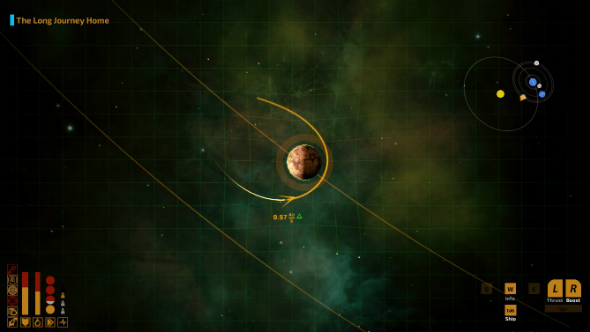
A successful playthrough of The Long Journey Home takes roughly six hours – I say roughly because I never did manage to get the Daedalus-7 home – most of which you’ll spend floating around solar systems trying to figure out which planets you’ll be able to harvest materials from. To find out how dangerous a planet is, and what resources you’ll find there, you have to orbit it for a few seconds, which means getting really close to it. Then, if by some divine miracle the planet is both safe and useful to you, you’ll have to land on it, mine its goodies, and return to your ship. Depending on what lander you selected at the start of the game, you’ll either have a small cargo hold for storing minerals, or very little fuel for running the drill so you’ll only be able to get half of all a planet’s resources on a single trip. With the ship’s thirst for metal, gas, and Exotic Matter quenched, it’s time to head to another star system and start all over again.
There’s nothing particularly wrong with those mini-games and survival mechanics, but you always feel at the mercy of the universe. Even if you manage to stay on top of your ship and crew health, you’ll still have to repair various modules that break down over the course of your trip. You can’t predict what will break and when, and the only way to fix them is to go to a very specific form of starport. These modules never stop your progress, they just gradually grind you down so that every action you perform is as inefficient as possible, which in turn forces you to repeat the same cycle of mini-games a few more times over. Of course, those repairs will cost you Credits too, so you can forget about buying bandages or a lander module that lets you land on high-gravity planets.
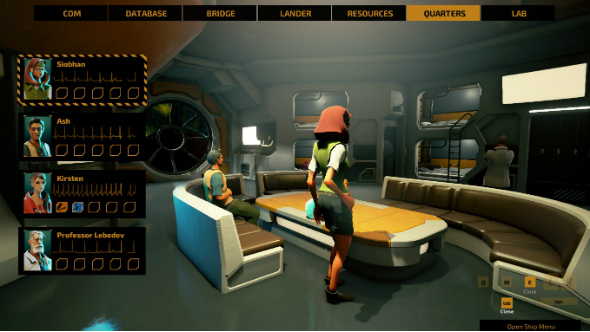
The Long Journey Home is tough and you’re made to feel like you’re failing from the start – that’s not particularly fun. To an extent, being made to feel so absolutely at the mercy of the game’s world is compelling. You really do anticipate planets with rare resources and a relatively safe atmosphere. After an hour of desperately avoiding Rexact raiders, scraping by with barely any fuel and a ship that’s one rocky jump away from disintegrating entirely, a low-gravity planet with no convection and stacks of rare resources is like coming across an oasis in the desert. When times are tough you agonise over everything: whether to risk a crew member exploring the ruins of an ancient civilisation, accepting a quest from an unfamiliar alien race, or landing on a particularly hazardous planet.
Unfortunately, these decisions are mostly binary. Land or fly away, explore or don’t, decline or accept. It’s the state of your ship and crew that determines whether you can engage with the world, and both will almost always be in decline, which means the longer you survive, the fewer options you have. With such a great distance to overcome, and so many potential routes in front of you, it’s disheartening how often survival decisions boil down to playing it safe. Scout out every planet, avoid the dangerous ones, harvest all the mineral goodness from the safe ones, and steer clear of any suspicious species.
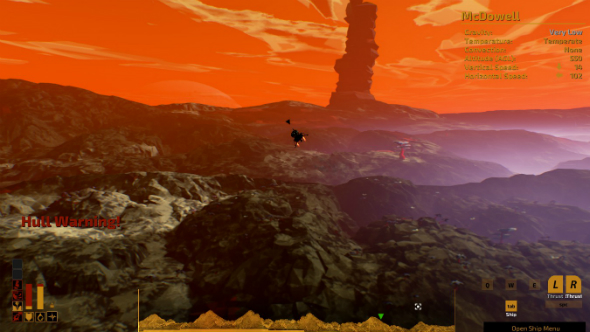
It’s a shame The Long Journey Home’s core mechanics quickly become repetitive as they’re the gateway to the game’s best asset: its aliens. There are a lot of aliens in the game, more than I’ve met across my 12 attempted playthroughs. There are robots, sentient plants, traders, religious nuts, conspiracy theorists, quasi-deities, bloodthirsty pirates, monarchs, and scientists. Each one has a distinct set of preferences, motives, and strengths that you must learn over the course of your multiple playthroughs. The Wolphax, for example, will hold you in high esteem if you approach them with your shield and weapons ready, as they’re a race of honour-bound knights. The Glukkt will offer you 600 Credits, but only mention after you’ve accepted that there’s a 200 Credit interest on that loan.
On my first voyage I encountered the Mizzurani, who offered me an entire tank of Exotic Matter in exchange for their friendship. After accepting the tank – what could I possibly have to lose – the Mizzurani ship followed me wherever I went. It was nice having a space friend. That was until I went to actually refuel with the gifted Exotic Matter – the crew member I tasked with the job suddenly became infected. Between the various bandages, salves, and first aid kits I had on board, nothing would cure the infection, and after an hour I had my first death. The Mizzurani cropped up in my second playthrough, and I politely declined the Exotic Matter. They still followed me across various star systems, except while orbiting one planet they crashed. I sent the lander in to investigate. Another error on my part – it turns out that the Mizzurani’s motive is to spread around the universe, and consume everything they come into contact with. I later found out from a race of wise ancients, called the Lagos, that the Mizzurani were a fungal plague that the Lagos have been battling for millennia.
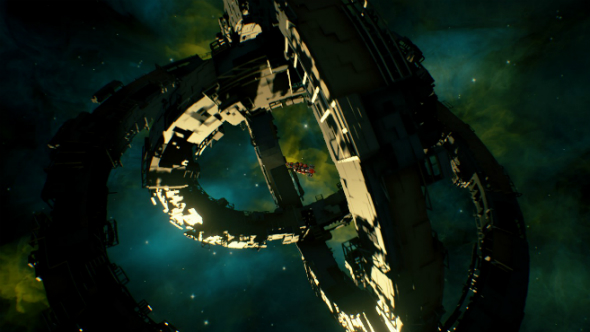
There’s a genuine sense of intrigue surrounding the many races of The Long Journey, one fed through fleeting encounters and characterful dialogue. Understanding each one yields benefits, and they all have quests to offer with huge Credit rewards that are essential to continuing your journey. The writing is exquisite, original, and refreshingly witty. I laughed out loud many times over while meeting new races, getting to know their quirks and wants. At one point, I found myself totally stuck at a mass relay with no way of progressing, or even turning back. Along came a titanic Meorcl ship and an arrogant greeting from a race of beardy, lumpy space kings. They weren’t offering me a tow, they were forcing me to take part in an interspecies quiz show – correct answers would be rewarded with Credits, incorrect answers would be punished with injuries to my crew. I got all three questions right, luckily, earning enough money to both repair my ship and pay the fee to unlock the nearby mass relay.
It was one of the best random encounters I’ve ever experienced, and there are countless more like it in The Long Journey Home waiting to be discovered. The problem is that it takes far too many hours spent repeating mini-games and making simple choices to reach the next special moment, and when one does eventually land in your lap you’re too concerned about keeping your ship and crew together to invest in a side quest for unspecified rewards.
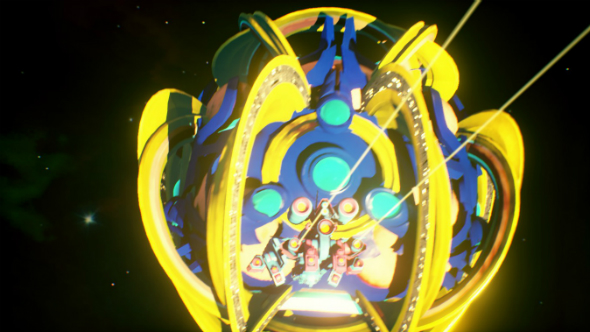
It’s frustrating, but only because the good moments are among the best of any procedurally-generated game or expedition-based RPG. During my most successful voyage I encountered a race of zealots, who badgered me throughout the game with prayers, simple favours, and barter requests. I nodded along in every meeting, skipping some sections of their rambling speeches, until my last meeting with them when they rewarded my apparent piety with 1,260 Credits. I was running low on fuel, my ship was as good as destroyed, and my crew were barely standing – I used every last credit healing my crew, refueling my ship, and repairing its hull. One mass relay jump stood between me and the final galaxy before Earth. At this point the game decided to throw a curveball by destroy all of my Exotic Matter in transit, damaging my ship, and dropping me into a galaxy full of new and powerful enemies who promptly blow me to pieces. This time I really do scream.
There is something beautiful and admirable about the experience when you take a step back from it. The Long Journey Home does a superb job of making you feel like a stranger in a strange place. The aliens you encounter are all established and regard you with mild curiosity rather than alarm. You’re properly up against it and that can be very gripping. After six hours, however, it’s just draining, and because every objective is a mini-game, there’s almost no respite from the moment-to-moment struggle. I want to see more of The Long Journey Home’s creatures and worlds, the attractions and points of interest, what I don’t relish about jumping back in is, unfortunately, the journey itself.
